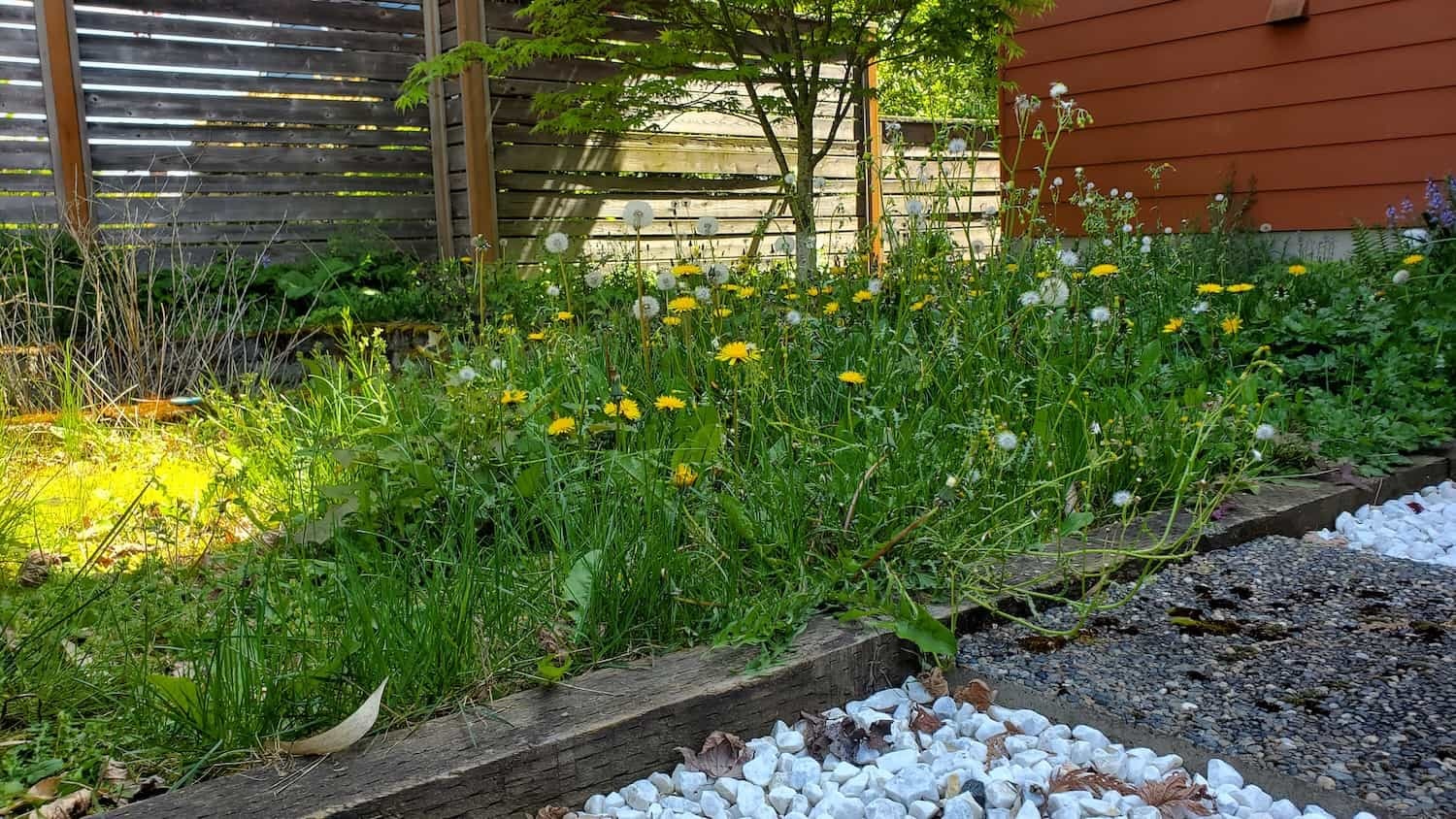West Seattle Horsetail Treatment
Homeowner’s Issue
Horsetail (Equisetum spp.) shows up in West Seattle because our soils and microclimates suit it. Many yards here sit on glacial till with clay pockets, shallow planting zones, or compacted topsoil that hold water near the surface. Winter rain and poor surface drainage keep root zones damp—ideal for horsetail—particularly in north-facing yards, shaded beds under mature maples, and lower terraces toward Lincoln Park or gullies near Alki.
Horsetail tolerates shade, low nutrients, and repeated mowing; it spreads by rhizomes and stubborn root fragments, so a single patch can come back if you only cut stems. Invasive-looking horsetail hurts curb appeal under HOA rules and can outcompete ornamentals in narrow side yards and slope plantings around The Junction and Fauntleroy. Moss and ivy pressure is common here too; both are symptoms of the same moisture and compaction problems. Effective control in West Seattle means addressing drainage, removing roots, and changing the growing conditions—not relying on quick sprays. Expect persistent follow-ups for season-long suppression and soil rebuilding to prevent re‑establishment.
Our Quality Service
We remove horsetail using sustainable, non-chemical methods only. Our crew does a thorough inspection, then uses hand‑digging, targeted root excavation, solarization, smothering (mulch or fabric where appropriate), and soil amendments to shift conditions away from horsetail-friendly.
We use compact, low-impact tools for tight access and small mechanical diggers for larger infestations. Typical timeline: assessment and first removal visit (1–3 hours for an average yard), two follow-ups in the first growing season, then seasonal checks. For steep slopes we phase work to control erosion and use terracing or planting to stabilize soil.
Benefits: safer for kids and pets, improved curb appeal, less repeat work over time, and a healthier soil profile that supports desirable plants.
What’s Included
- Onsite assessment with a written plan and photos.
- Manual removal of horsetail stems and targeted root excavation.
- Surface prep: dethatching, light aeration, and compost/topsoil where needed.
- Mulch or smothering layer installation (where suitable).
- Two scheduled follow-ups in the first season; additional visits available.
Options / Upgrades:
- Heavy mulch + landscape fabric (for pathways and beds).
- Solarization (clear plastic) for dense patches in summer months.
- Soil testing and tailored organic amendments (lime, compost, sand for drainage).
- Replanting with competitive, low-maintenance species.
- Debris haul‑away vs. green‑bin drop-off (you choose).
Before & After / Expectations
- Mess and noise: digging creates soil disturbance and temporary mess; expect surface scars that settle over weeks. We clean work areas and haul or bin debris.
- Access: we need clear access to infested beds; narrow side yards may require hand tools.
- Timeline: first visible reduction after the initial removal; full suppression often requires 6–12 months of follow-ups and soil work.
- Debris: root fragments are collected and removed; we do not compost horsetail on-site.
Care tips for West Seattle: - Water only in the morning and avoid overwatering north-facing beds; horsetail thrives in chronically wet soil.
- Spring and early summer are prime times for follow-up pulls—be proactive after the first flush.
- Address compacted soil with aeration and organic matter; adding sand without compost can make problems worse in clay.
- Watch for moss/ivy as indicators of shade + moisture; reduce canopy where feasible to improve sun and airflow.
FAQs
How long before horsetail stops returning?
Expect visible decline in one season with follow-ups; durable control usually takes 6–12 months of corrective soil work and monitoring.Do you use herbicides?
No. We use mechanical removal, smothering, solarization, and organic soil amendments only.Will this damage my desirable plants?
We plan removals to avoid healthy ornamentals. In tight beds, temporary transplanting or phased removal helps protect specimen plants.What if I have a steep slope or drainage problem?
We include erosion control and phased work for slopes, plus recommendations for French drains or planting changes when needed.
Call to Action
If horsetail is pulling down your curb appeal in West Seattle, we’ll give you a practical, sustainable plan and a clear schedule. Free photo estimates available; same-week visits often possible for urgent patches. Trusted local crews, straightforward prices, and no chemical shortcuts.
Email neatandtidyseattle@gmail.com or call 206-538-9344 to book an assessment or free estimate. Mon–Sun: 9am–6pm.










